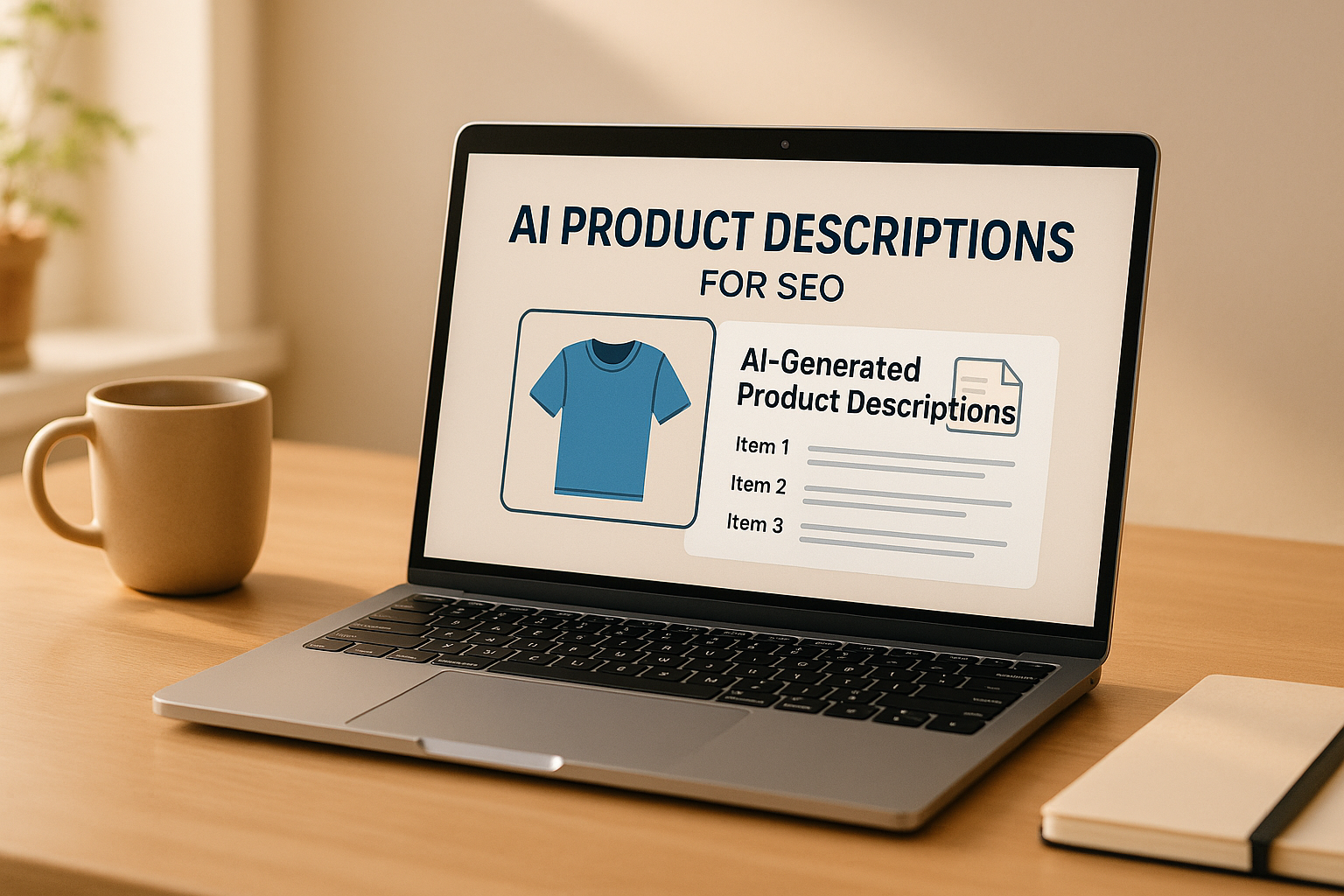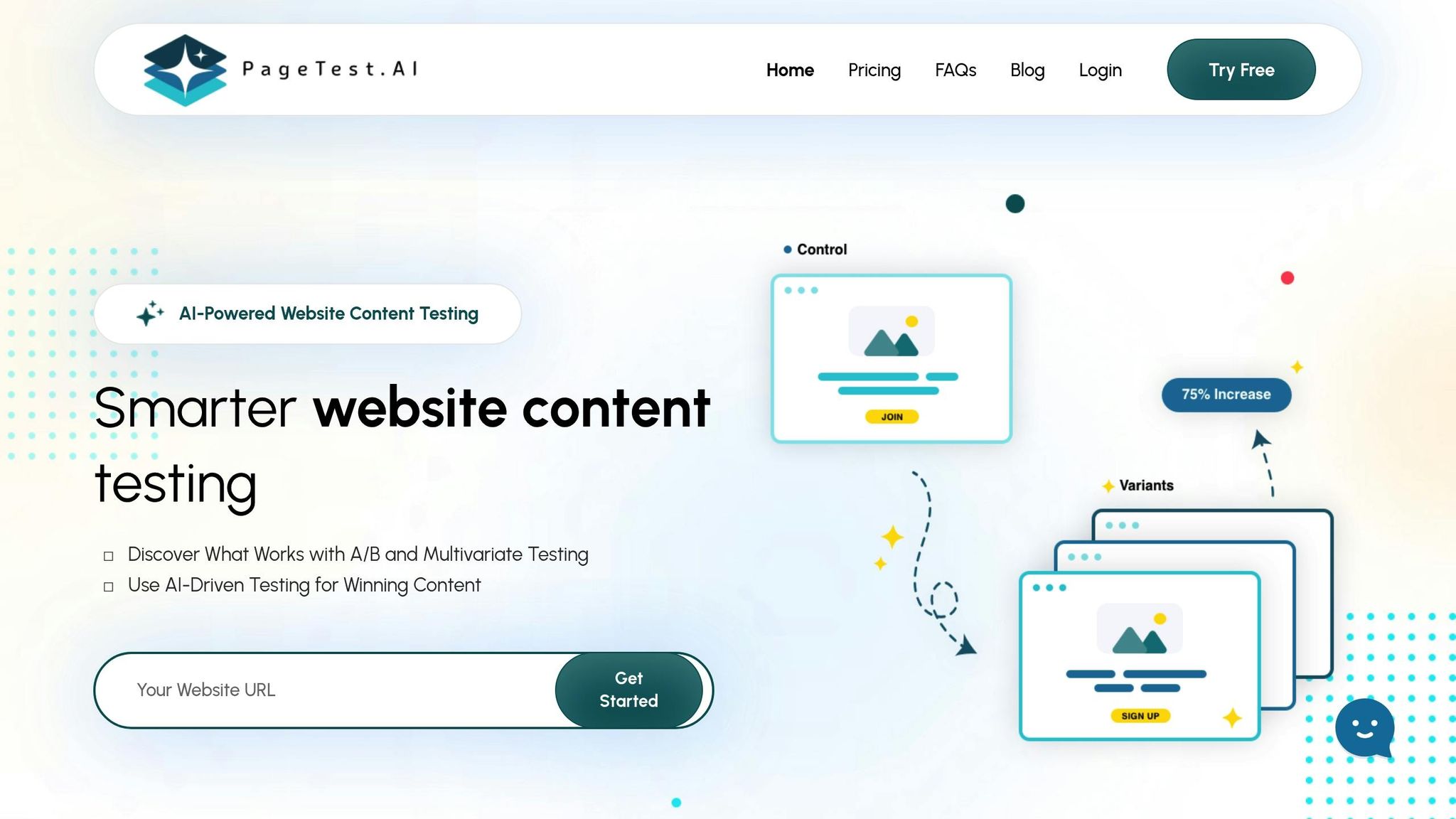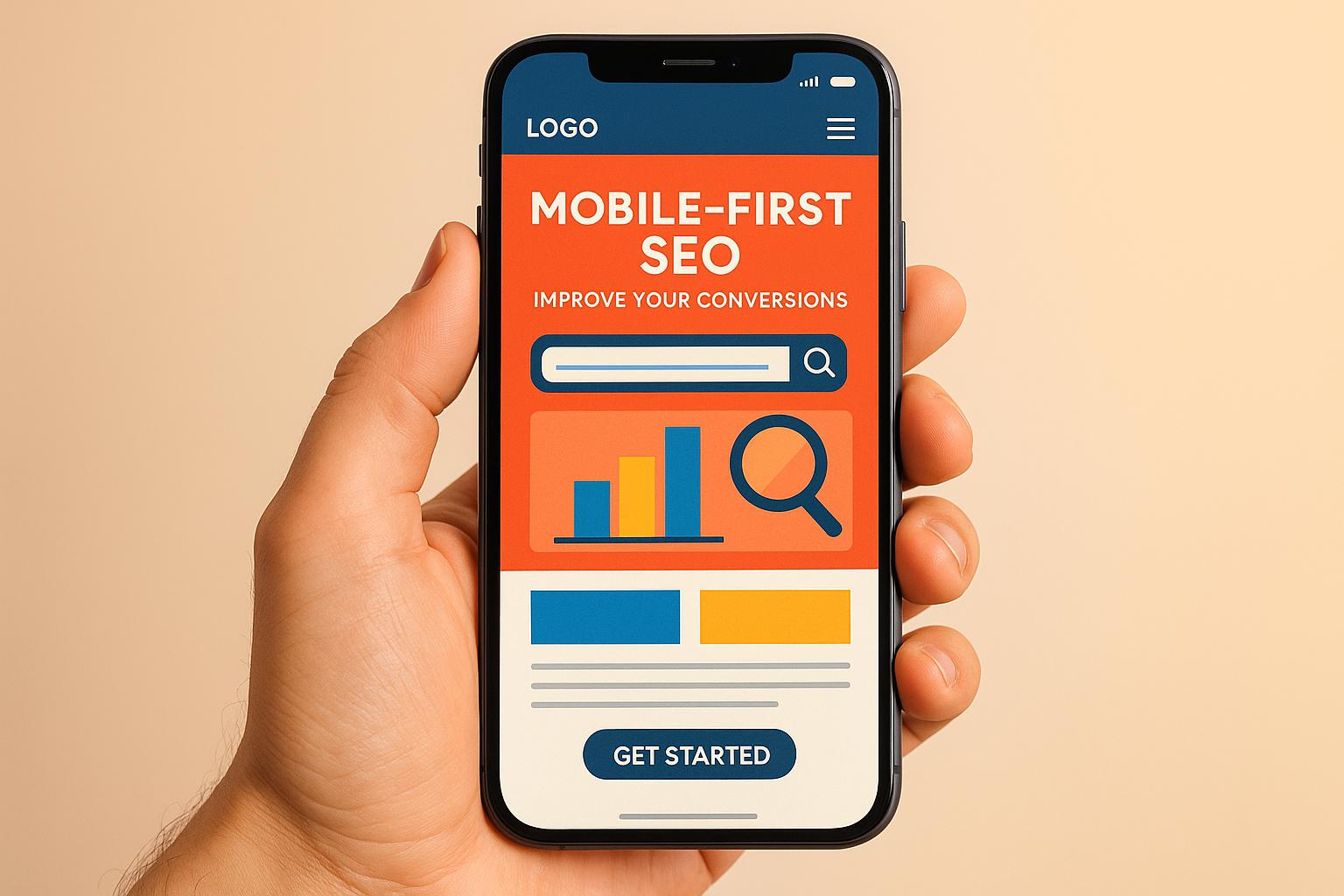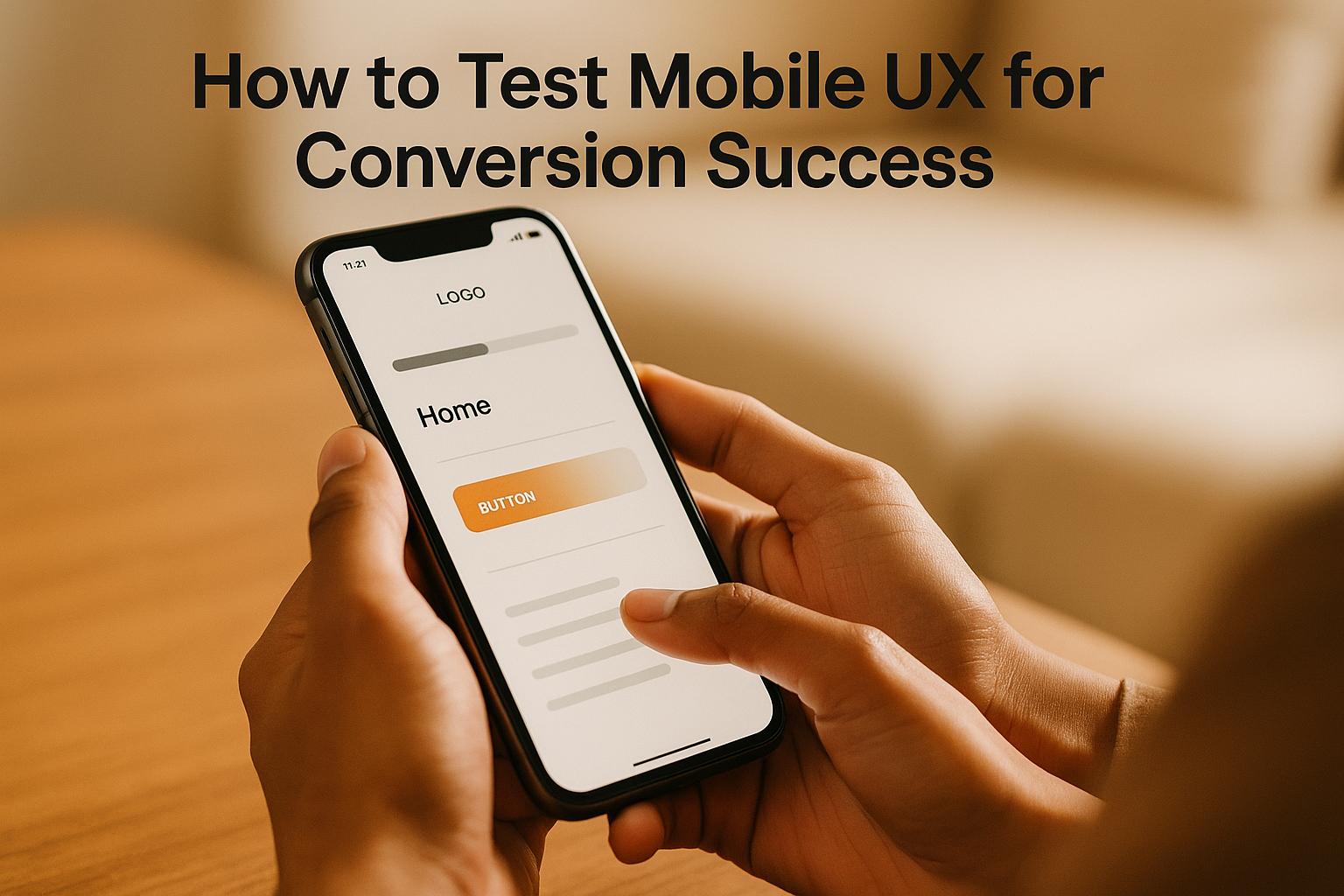

AI Product Descriptions for SEO

AI Product Descriptions for SEO
 02-10-2025 (Last modified: 03-10-2025)
02-10-2025 (Last modified: 03-10-2025)
AI-generated product descriptions are transforming e-commerce by saving time, reducing costs, and improving SEO performance. Businesses can now create hundreds of product listings in minutes, integrate keywords for better search visibility, and personalize content to target specific customer needs. For example, companies using AI for this purpose report up to a 30% boost in conversion rates and significant cost savings – reducing listing costs from $5.00 to under $0.02 per product.
Key takeaways:
- Speed: AI tools can generate thousands of descriptions in minutes, compared to days with traditional methods.
- Cost Efficiency: Over 90% cost reduction per description.
- SEO Optimization: Automatically integrates keywords for better rankings.
- Personalization: Customizes content for different audiences and platforms.
- Scalability: Handles large product catalogs effortlessly.
This AI Workflow Makes Perfect Product Descriptions in Seconds!
Key Elements of SEO-Optimized Product Descriptions
Crafting SEO-friendly product descriptions requires a careful balance of keyword integration and clear, engaging content. The best descriptions not only rank well on search engines but also provide the details customers need to make informed decisions. By combining a smart keyword strategy, reader-friendly structure, and detailed product information, you can create descriptions that work for both algorithms and shoppers.
Keyword Strategy for High Search Visibility
Primary keywords are the cornerstone of your SEO efforts. These are the exact terms people use when searching for your product type. For instance, if you’re selling a wireless Bluetooth speaker, “wireless Bluetooth speaker” or “portable speaker” would be your primary keywords. These should appear naturally in the product title and within the first 160 characters of your description.
Secondary keywords help you reach related searches. For the same speaker, secondary keywords could include phrases like “waterproof speaker”, “outdoor audio device”, or “rechargeable speaker.” These terms allow you to target variations of your main keywords, addressing different search intents and customer needs.
Long-tail keywords are longer, more detailed phrases that often face less competition but attract buyers who are ready to make a purchase. Instead of competing for “speaker”, you might focus on phrases like “waterproof Bluetooth speaker for beach parties” or “compact wireless speaker under $100.” These specific phrases can lead to higher conversion rates.
Semantic keywords – related terms and synonyms – help search engines understand the context of your content. For example, words like “device”, “gadget”, “technology”, or specific product specs can enhance your description’s relevance. Using these naturally gives search engines a clearer picture of your product.
When weaving these keywords into your descriptions, keep it natural. Avoid keyword stuffing, as it can harm readability and search rankings.
Content Structure and Readability
Scannable formatting is essential for both user experience and SEO. Break up text with short paragraphs, bullet points, and bold headers to highlight key details. This makes your descriptions easier to read and more visually appealing.
Heading hierarchy is another important element. Use H3 tags for main sections like “Key Features” or “Technical Specifications” and H4 tags for subsections. This clear structure helps search engines and users navigate your content effortlessly.
Keep sentences concise – ideally under 20 words – and vary sentence structure to maintain a natural flow.
Active voice makes your descriptions more engaging and direct. For example, instead of saying, “This speaker is designed to be used outdoors”, say, “Take this speaker anywhere outdoors.” Active voice is not only more concise but also more compelling.
Meta descriptions play a crucial role in driving clicks from search results. These short snippets (150-160 characters) act as mini-advertisements for your product pages. Include your primary keyword and write persuasive copy that entices users to click.
These structural choices lay the groundwork for adding detailed product information that appeals to both search engines and potential buyers.
Adding Product-Specific Details
Global Trade Item Numbers (GTINs), such as UPC, EAN, or ISBN codes, are important for search engines and online marketplaces. They help verify product authenticity and improve visibility on platforms like Google Shopping. Incorporate these identifiers into your structured data and, when relevant, mention them in your descriptions.
Brand names and model numbers should be prominently featured. Search engines prioritize official product names, so including both the brand and model – like “Samsung Galaxy S24 Ultra” – multiple times in natural contexts can boost your rankings.
Technical specifications are essential for informing customers and providing search engines with detailed data. Include dimensions, weight, materials, compatibility, and performance metrics. For example, highlight battery life, fabric composition, or any other key specs that matter to your audience.
Compatibility and use cases not only broaden your keyword reach but also answer common customer questions. Explain what devices your product works with, the problems it solves, or the scenarios where it shines. This approach naturally incorporates long-tail keywords while offering valuable insights.
Warranty and certification information can add an extra layer of trust. Mention certifications like “FCC approved”, “Energy Star certified”, or “FDA approved” if applicable. These details often attract quality-conscious buyers and can give you an edge in competitive markets.
How AI Tools Improve Product Description Creation
AI has transformed the process of writing product descriptions, turning what used to be a slow, manual task into a fast, automated system capable of handling large volumes. These tools combine SEO expertise with data insights, making it easier to create content that aligns with search engine requirements and maintains a consistent brand voice.
AI tackles two major challenges: scale and consistency. While a human copywriter might produce 10 to 15 high-quality product listings in a day, AI tools can generate thousands, all optimized for SEO and tailored to the brand’s tone.
AI-Driven Personalization and Scalability
Modern AI tools take personalization to the next level by analyzing search data, competitor strategies, and customer behavior. This allows them to craft descriptions that resonate with specific audiences. They can adjust tone, highlight different product benefits, and customize content for various customer segments.
One of AI’s standout features is its ability to create audience-specific variations. For example, a single product could have multiple descriptions: one focusing on durability for outdoor enthusiasts, another emphasizing style for fashion-conscious shoppers, and a third highlighting affordability for budget-conscious buyers. These variations can be produced simultaneously, each optimized for its own set of keywords and search intents.
AI tools also excel at seamlessly integrating keywords into descriptions, ensuring they enhance SEO without sounding forced or awkward.
The scalability of AI tools is particularly valuable for businesses with extensive product catalogs. Whether it’s a fashion retailer managing thousands of SKUs, an electronics store dealing with detailed technical specifications, or a home goods company updating seasonal inventory, AI ensures that all product descriptions are fresh, relevant, and optimized – without requiring massive resources.
Additionally, many AI tools offer multilingual capabilities. They can create descriptions in various languages while adapting to local preferences and search behaviors. For example, a description for U.S. shoppers might focus on individual benefits, while one for another market might emphasize sustainability or community impact.
To refine these AI-generated descriptions further, businesses can use specialized testing platforms.
PageTest.AI for Optimizing Product Descriptions

Testing tools play a crucial role in maximizing the effectiveness of AI-generated content. PageTest.AI is one such platform, designed to help businesses test and refine product descriptions to ensure they perform at their best.
The platform’s no-code setup makes it user-friendly, even for teams without technical expertise. With the PageTest.AI Chrome extension, marketers can select any product description on their website and instantly generate test variations. These AI-created alternatives maintain the brand’s voice while experimenting with different keyword placements, benefit highlights, or structural formats.
Performance tracking goes beyond simple conversion rates. PageTest.AI monitors engagement metrics like time spent reading descriptions, scroll depth, and click-through rates to product images or specifications. These insights help businesses understand which elements of a description capture attention and influence purchase decisions.
The platform integrates seamlessly with various website systems, whether you’re using Shopify, WordPress, or a custom e-commerce platform. This flexibility means you can optimize product descriptions without needing developers or complex code changes.
Multivariate testing is another powerful feature. It allows businesses to test multiple elements of a description at once – such as headlines, the order of benefits, or call-to-action phrasing. This approach reveals how different elements work together and impact overall performance.
PageTest.AI also ensures that all variations adhere to SEO principles while exploring different ways to persuade customers. For instance, one version might emphasize emotional benefits, another might focus on practical features, and a third could highlight social proof. This methodical testing helps identify the messaging that resonates most with your audience.
The data-driven insights from PageTest.AI can also shape your broader content strategy. Patterns from successful tests, like customer preferences for specific benefits or ideal description lengths, can guide the creation of future AI-generated content across your entire product range.
sbb-itb-6e49fcd
Best Practices for Refining AI-Generated Content
AI tools can churn out product descriptions quickly, but the real magic happens when humans step in to refine that output. Raw AI content often needs a human touch to truly connect with customers and perform well in search rankings. Successful e-commerce businesses treat AI as a starting point, not the finish line, blending its efficiency with human insight to create engaging, on-brand content.
Reviewing for Brand Voice and Accuracy
Every brand has its own personality, and that should come through in product descriptions. While AI can generate technically correct content, it often misses the subtle nuances that make your brand stand out. For example, a luxury skincare brand might need polished, sophisticated language, while a budget-friendly electronics retailer should focus on being relatable and emphasizing value.
Maintaining brand voice consistency requires a careful review of AI-generated content. Look out for phrases that don’t align with your usual tone. If your brand leans toward casual language, using words like “awesome” or “game-changer”, but the AI spits out formal terms like “exceptional” or “revolutionary”, it can confuse your audience.
Accuracy is equally important. AI tools occasionally make incorrect assumptions about product details. For instance, a jacket might be described as “waterproof” when it’s actually “water-resistant”, or a laptop might be listed as having 16GB of RAM when it only has 8GB. Mistakes like these can lead to customer complaints, returns, and a loss of trust.
To avoid these issues, use a checklist during the review process. This should cover tone, technical specifications, benefit claims, and regulatory compliance. Divide the workload: product managers can verify technical details, while marketers ensure the descriptions match the brand voice. This combined effort not only protects your brand identity but also boosts SEO performance by keeping content accurate and aligned with customer expectations.
Avoiding Over-Optimization
While it’s important to optimize for search engines, overdoing it can hurt more than it helps. Keyword stuffing, for example, is a common pitfall that can lead to penalties from search engines like Google. In fact, sites that overuse keywords have seen traffic drop by as much as 30% to 50% almost overnight.
To strike the right balance, prioritize natural language flow over keyword density. A simple trick? Read the content aloud. If it sounds robotic or forced, it won’t resonate with customers.
Focus on user intent rather than cramming in keywords. For instance, someone searching for “noise-canceling headphones for travel” is probably interested in battery life, comfort during long flights, and how well the headphones block out airplane engine noise. Address these concerns directly, and the keywords will naturally fit into your content.
A real-world example from 2024-2025 highlights this approach. A blog penalized for keyword stuffing shifted its strategy to focus on natural language and user intent. The results were impressive: average time on page jumped from 12 seconds to 1.3 minutes. This shows that prioritizing readability and relevance pays off.
When using AI tools, guide them to prioritize readability and natural phrasing. After generating content, review it for awkward keyword usage and edit it to feel more conversational. Regular updates and adjustments will ensure your descriptions remain relevant and engaging.
Regular Updates Based on Trends and Feedback
Product descriptions aren’t a one-and-done task. Customer preferences shift, new features become relevant, and seasonal trends change what buyers care about. Regular updates keep your content fresh and aligned with what customers are looking for.
Customer feedback is a goldmine for improving descriptions. Look for recurring questions in reviews or customer service inquiries. For example, if customers frequently ask about a feature that isn’t mentioned in the description, it’s time to add that detail. Similarly, if reviews highlight a benefit you hadn’t emphasized, make sure to include it in future updates.
Seasonal adjustments can also make a big difference. A space heater’s description in October might focus on energy efficiency and safety, while in March, storage and reliability become more relevant. AI tools can help generate seasonal variations, but human oversight ensures the updates reflect actual customer behavior.
Monitoring search trends can reveal shifts in how customers describe or search for products. A term that was popular six months ago might now be outdated, while new phrases gain traction. Tools like Google Trends can provide insights, but your own search traffic and conversion data offer the most actionable information.
Set a regular review schedule – quarterly for large product catalogs and twice a year for smaller ones. For seasonal or trending products, monthly reviews can help you stay ahead of changing customer interests.
Track the performance of updated descriptions to see what works. If descriptions highlighting sustainability consistently outperform those focused on price, use that insight to guide future updates. Treat AI-generated content as a living asset that evolves with attention and refinement. By combining AI’s speed with human expertise, you can create descriptions that not only rank well but also convert browsers into buyers.
Measuring the Impact of AI-Optimized Product Descriptions
AI-optimized product descriptions can only deliver value if their performance is tracked. Without proper measurement, you might miss opportunities to improve SEO rankings and boost sales conversions. Here’s a look at the key metrics that help quantify their impact.
Key Metrics for Performance Evaluation
To gauge the effectiveness of AI-optimized descriptions, focus on these metrics:
- Organic search traffic: Keep an eye on visitor numbers before and after implementing AI-generated descriptions. A noticeable increase often signals better rankings for relevant keywords.
- Click-through rates (CTR): This metric reflects how enticing your descriptions are in search results. Low CTRs may point to issues with meta descriptions or titles. Use Google Search Console to identify pages that need adjustments.
- Conversion rates: Traffic is great, but are visitors buying? If conversions drop despite higher traffic, your descriptions might not be addressing customer needs effectively. Track this metric for individual products to identify trends.
- Time on page and bounce rate: These reveal how engaging your content is. If visitors leave quickly, they likely didn’t find what they were looking for. Longer engagement times suggest your descriptions resonate with readers.
- Search ranking positions: Monitor the rankings of your primary product keywords regularly. This helps you see which descriptions are performing well and which might need tweaking.
- Revenue per visitor: This metric combines traffic quality with conversion success, offering a clear view of the financial return on your optimization efforts.
Using PageTest.AI for Data-Driven Insights
PageTest.AI simplifies performance tracking by monitoring key metrics like clicks, engagement, time on page, and scroll depth. This comprehensive data helps you understand how customers interact with your content.
- A/B testing: Compare different description styles, tones, or keyword placements to find out what resonates most with your audience. By testing variations side by side, you can make informed decisions based on actual results, not assumptions.
- Real-time performance tracking: Instead of waiting weeks, see how new descriptions perform within hours of going live. This quick feedback loop lets you refine your strategy faster.
- AI-generated content variations: The platform can create multiple description styles, emphasizing different product benefits. This allows you to test which messaging works best for specific products or customer segments.
- Advanced engagement metrics: Go beyond basic analytics with insights like scroll depth and click tracking. These metrics highlight which product features or benefits capture the most interest.
- Platform integration: Whether you use WordPress, Shopify, Wix, or another system, PageTest.AI works seamlessly, making it easy to test and optimize descriptions across platforms.
Comparing Results Before and After Optimization
To measure the true impact of AI optimizations, start by setting clear baseline metrics. Document your current organic traffic, conversion rates, average order value, and search rankings for key products. These figures become your reference point for evaluating improvements.
- Weekly performance reviews: During the first month, review traffic, conversions, and rankings regularly. Some changes may happen quickly, while others take time as search engines process your updates.
- Dashboards for visual insights: Use visual tools to compare pre- and post-optimization metrics. This makes it easier to spot which products are thriving and which may need further adjustments.
- Seasonal considerations: Account for natural demand fluctuations. For example, a 20% traffic boost in December might mean less than a 5% increase in February, depending on your product category. Year-over-year comparisons can provide a clearer picture.
- Cumulative improvements: SEO benefits often build over time. A modest gain in the first month could grow into significant results over six months as search engines fully recognize your optimized content.
- Revenue impact analysis: Tie your efforts to business outcomes by calculating the extra revenue generated from increased traffic and conversions. This helps justify continued investment in AI-powered optimization and can guide expansion to other products or categories.
Finally, document what worked and what didn’t. Products that underperform often reveal valuable insights about customer preferences, keyword choices, or content structure. These lessons will shape your future strategies and help refine your approach for even better results.
Building Better Product Descriptions for SEO
Crafting effective product descriptions for SEO is all about blending AI’s efficiency with a human touch to create content that resonates with both search engines and your audience. The goal? Descriptions that not only rank well but also connect with your customers.
Start with strong keyword research. Before diving into AI tools, take the time to understand what your customers are searching for. This step ensures that the AI-generated content focuses on the right terms from the start, aligning with your audience’s needs and search behavior.
Expert review is non-negotiable. AI can generate descriptions quickly, but they need a human eye to refine them. Review each draft for accuracy, tone, and completeness to ensure it matches your brand’s voice and provides the information your customers need.
Testing is where the magic happens. Tools like PageTest.AI allow you to experiment with different styles, keyword placements, and structures to see what works best. By comparing variations side by side, you can pinpoint the descriptions that drive more clicks, keep visitors engaged longer, and ultimately lead to higher conversion rates.
Once you’ve tested and validated your descriptions, maintaining consistency across your catalog becomes easier with AI. A cohesive structure not only enhances the user experience but also helps search engines better understand your site’s content, which can boost your overall rankings.
But the work doesn’t stop there. Continuous refinement is crucial. Search trends, competitor strategies, and customer preferences are always changing. With AI’s speed and tools like PageTest.AI, you can regularly review and update underperforming descriptions. Monthly check-ins let you test fresh approaches and stay ahead of the curve without breaking the bank.
FAQs
How do AI-generated product descriptions improve SEO for e-commerce businesses?
AI-generated product descriptions can play a key role in improving SEO for e-commerce sites. By crafting consistent, keyword-rich content, these descriptions help product pages climb higher in search rankings, making them easier for potential customers to find.
What’s more, AI offers the ability to create scalable, customized descriptions that resonate with different audience segments. This personalized approach not only grabs attention but can also encourage more engagement, ultimately leading to increased conversions and sales. Plus, businesses can save time by letting AI handle the heavy lifting, ensuring their content appeals to both search engines and shoppers alike.
How can I ensure AI-generated product descriptions reflect my brand’s voice and meet customer expectations?
To make AI-generated product descriptions match your brand’s personality and connect with your audience, start with clear instructions on tone, style, and language preferences. Share examples of your existing content that reflect your brand’s unique identity to guide the AI’s learning process. Regularly check and tweak the AI’s output to ensure it stays consistent and feels genuine.
It’s also a good idea to keep an eye on customer reactions to these descriptions. By analyzing their feedback, you can fine-tune the content to better align with their expectations. This not only strengthens trust but also ensures your messaging stays true to your brand’s character.
How can businesses track the impact of AI-enhanced product descriptions on sales and SEO performance?
To understand how AI-optimized product descriptions are performing, businesses should keep an eye on key metrics like organic traffic, search rankings, click-through rates (CTR), and conversion rates. These metrics reveal how effectively the descriptions are boosting visibility and encouraging user interaction.
Beyond that, examining sales performance and observing shifts in user behavior – such as how long visitors stay on a page or how they interact with specific products – can offer valuable insights. Using AI-driven tools to track impressions, clicks, and overall engagement provides a data-focused way to refine product descriptions for better SEO results and increased sales.
Related Blog Posts
say hello to easy Content Testing
try PageTest.AI tool for free
Start making the most of your websites traffic and optimize your content and CTAs.
Related Posts
 24-11-2025
24-11-2025
 Becky Halls
Becky Halls
How Social Media Marketing Will Change in 2026: Stop Posting, Start Getting Found
Social media is no longer a place people visit after they have finished “real” research. For a huge chunk of users, especially under 35, TikTok, Instagram, YouTube and Reddit are where research starts: which product to buy, which tool to try, what restaurant to visit, how to fix a problem. In 2025, almost two thirds […]

 20-11-2025
20-11-2025
 Ian Naylor
Ian Naylor
How Mobile-First SEO Impacts Conversions
Optimizing for mobile is crucial for improving user experience and boosting conversion rates, as mobile traffic continues to rise.

 18-11-2025
18-11-2025
 Ian Naylor
Ian Naylor
How to Test Mobile UX for Conversion Success
Enhancing mobile UX is crucial for boosting conversions. Explore effective strategies and testing methods to improve user experiences on mobile devices.
